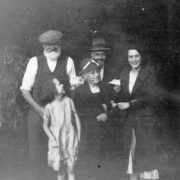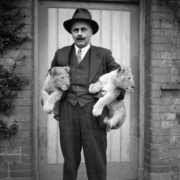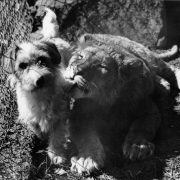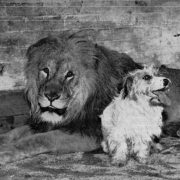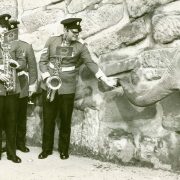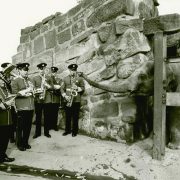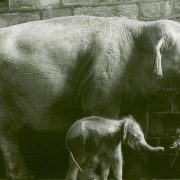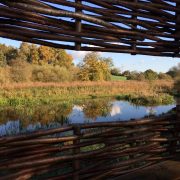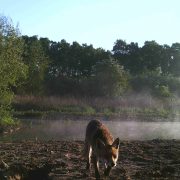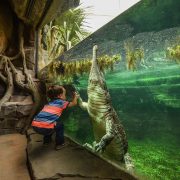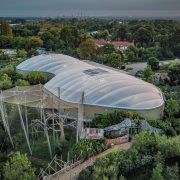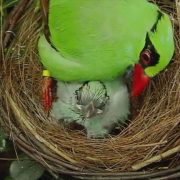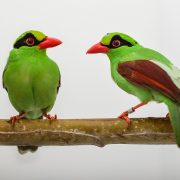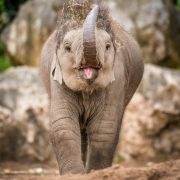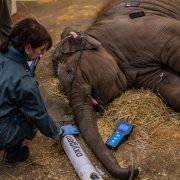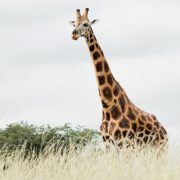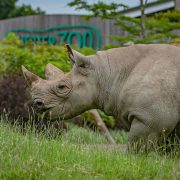A series of images from our archives have been released to mark our 90th anniversary!
We first opened our gates on 10 June 1931 and since then, we’ve looked back through our library of historical documents and files to share some of our most momentous and significant moments.
These include an image of visitors entering the zoo for the very first time, letters and postcards sent to congratulate its founder George Mottershead on the award of his OBE for services to conservation, and a picture of a giraffe which featured in the Guinness Book of Records in the 1960s for being the tallest EVER recorded.
We believe that some of the photos, which have been in storage for decades, have never been shown to the public before!
A BLAST FROM THE PAST
PSSSTT
“What started off as a family run zoo in Chester back in the 1930s has now grown into a globally-renowned centre for conservation and scientific excellence, and one of the UK’s biggest and most popular visitor attractions. From first becoming a charity in 1934, to opening the first zoo-based endocrinology lab to closely study animal hormones in 2007, to unveiling the UK’s biggest ever indoor zoological building in 2015, to launching an ambitious Conservation Masterplan to prevent wildlife extinction as recently as this year, we’ve often led the way in terms of creativity and innovation.”
Jamie Christon, CEO
“Conservation has long been at the heart of everything we do. This zoo and its expert staff have been the first to successfully breed many of the world’s rarest species, from the critically endangered Javan green magpie to the prehistoric-looking tuatara, establishing vital insurance populations for threatened animals. We’ve reintroduced species to the wild, from barn owls to eastern black rhinos, and currently run 50 vital conservation projects in 21 different countries.
“Progressive zoos like ours are powerhouses in conservation. Our unique combination of thriving animal populations, millions of visitors, scientific research and wide-ranging skills is simply invaluable to wildlife, globally.
“Looking back at our incredible 90-year history puts us on solid foundations. But as the world reaches a tipping point in the biodiversity crisis, what we do next in our fight to prevent extinction has never been more important.”
1931
Founded by George Mottershead and his family, Chester Zoo welcomed its very first visitors on 10 June, 1931.
When the zoo initially opened, visitors were so few and far between that they had to ring a bell on arrival at the then main entrance to summon a staff member to take their money – one shilling for adults and sixpence for children.
Three years later, Mr Mottershead registered the zoo as a non-profit making organisation to be run as a charitable educational, scientific institution.
A membership scheme was also launched. In its first year 155 members, whose subscriptions totalled two hundred and sixteen pounds, signed up. Today the zoo has over 119,000 members who support its mission to prevent extinction.
1940
They say a dog is a man’s best friend. Well, in this case, it became apparent that a dog can be friends with any animal.
In 1942, a 15-month-old lion attracted a huge amount of attention after developing an unlikely companion – Peter the dog. The lion, named Mowgli (after the character in the film ‘Jungle Book’) lost his two siblings, and was said to have almost died from the grief. Peter kept him company and the pair became inseparable. So much so, when George Mottershead separated them in order for Mowgli to begin spending more time with the other lions, he had to reconsider letting them live together again as they both were pining for one another.
They were a huge draw to the war weary public who flocked in large numbers to see them playing together. The pair ate together, played together and slept in the same habitat together until Peter, sadly, passed away in 1948.
1960
The tallest giraffe ever recorded (at the time) was a Masai bull living at Chester Zoo, named George.
He featured in the Guinness Book of Records and measured just under 20 feet in height.
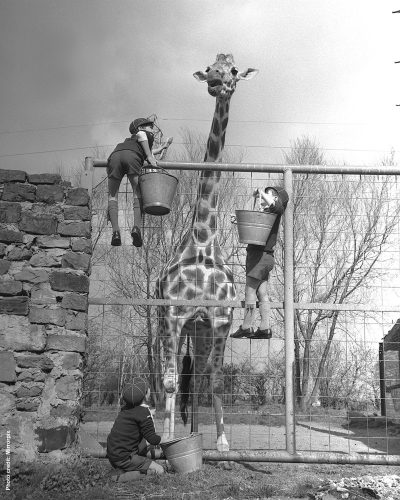
1970
Chester Zoo founder, George Mottershead, was given an OBE for his outstanding contribution to conservation.
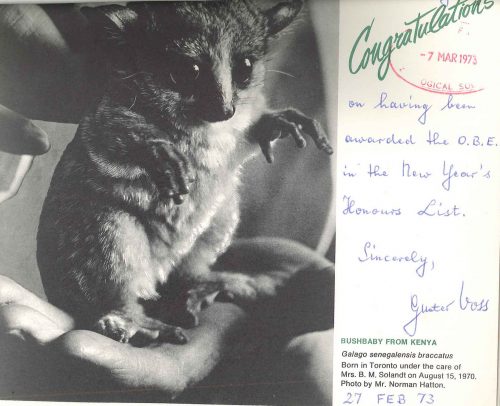
1977
Chester became the first zoo in the UK to successfully breed endangered Asian elephants.
The first to be born was a calf who was later to be named Jubilee by viewers of the BBC’s TV show, Blue Peter.
Arriving to parents Judy and Nobby, Jubilee made an early arrival into the world after being born a month before his expected due date.
1980
Fourteen Pere David’s deer bred at Chester Zoo were returned to their native range in China where they had previously become extinct in 1920 – a very significant moment for conservationists at the zoo.
A year after their reintroduction to the wild, they too were discovered to be breeding.
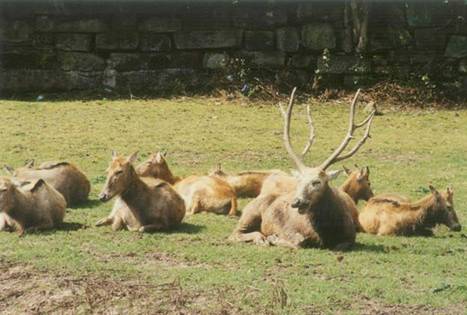
2006
Scientists discovered that the world’s largest lizard, the Komodo dragon, was capable of “virgin births.”
Two cases of where female Komodo dragons produced offspring without male contact were reported – a process called parthenogenesis.
One of the reptiles associated to the ground-breaking discovery was Flora, a resident at Chester Zoo.
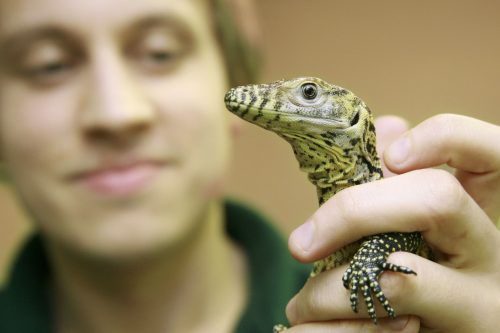
2013
Zoo conservationists turned a barren seven hectares of land into a new nature reserve, enabling rare and declining UK wildlife to flourish.
Camera traps positioned around the site have captured images of lots of rare species that have since made the nature reserve home, including invertebrates like beetles, newts, dragon flies, hover flies, Essex skipper butterfly (which has only been recorded nine times in Cheshire since records began over 150 years ago), pole cats, birds and barn owls.
2015
Chester Zoo opens ‘Islands’ – the largest zoo development ever seen in the UK.
The ambitious project features six islands linked by bridges and a boat trip to see threatened plants and animals from South East Asia including critically endangered tigers, orangutans and crocodiles.
Throwing an important spotlight on the zoo’s vital conservation efforts in South East Asia, Islands also features ‘Monsoon Forest’ – the UK’s biggest indoor zoological building.
2016
A unique tuatara – a species believed to have pre-dated the dinosaurs – hatched at the zoo.
It was the first ever breeding of tuatara anywhere in the world, outside of its native New Zealand.
Tuataras are ancient reptiles that once flourished as long as as 225 million years ago.
But, around 70 million years ago, the species became extinct everywhere except New Zealand, where it now has iconic status. The animals are steeped in Māori culture and are highly revered, with the islands on which they live now protected and very few people given permission to visit.
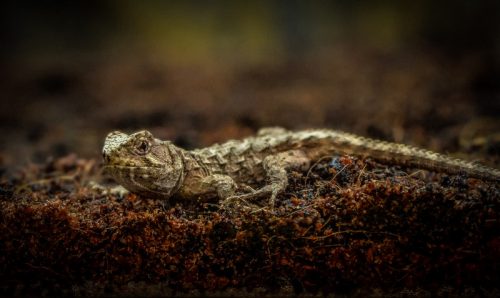
2017
Six pairs of one of the world’s rarest bird species – the Javan green magpie – were flown to Chester Zoo from Indonesia in a bid to create a new breeding programme save them from extinction.
With only approximately 50 remaining in the wild, Chester Zoo became the first UK zoo to successfully breed the species to give a vital boost to its global population, with the eventual goal of returning birds to their natural habitat.
The birds face widespread extinction as a result of the Asian songbird crisis and illegal wildlife trade.
2018
Conservationists from Chester Zoo, alongside its partners the Giraffe Conservation Foundation, helped to reintroduce a population of 14 wild giraffes to an area of Uganda where they had previously been declared extinct due to poaching.
Extensive work to ensure the area was protected was undertaken beforehand and recent reports the group is now thriving. A number of births has since seen it expand to 50 individuals – vitally important as giraffe numbers across the African continent have plummeted by 40% in the last 30 years, with only 2,250 remaining.
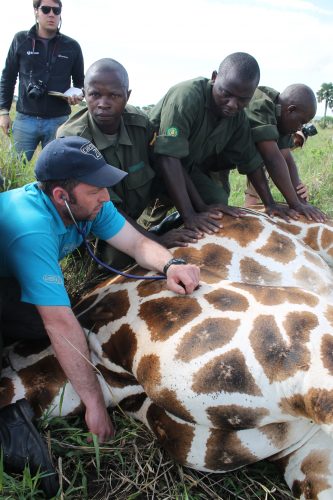
2019
Following ground-breaking developments in early detection and treatment methods trailled at the zoo, a two-year-old Asian elephant, named Indali Hi Way, made a full recovery from a deadly virus known as EEHV – a rare case of an Asian elephant surviving the lethal illness.
Indali’s successful recovery was hailed by experts as a momentous step for both Chester Zoo and global Asian elephant conservation.
We’re spearheading vital scientific research into EEHV, which is a major threat to the long-term survival of endangered Asian elephants globally, with reports of wild elephant fatalities in India, Nepal, Myanmar and Thailand on the rise.
It is known to have caused deaths in nine countries across their native range, as well as in zoo breeding programmes worldwide.
2019
Five critically endangered eastern black rhinos bred in European zoos were carefully transferred to Rwanda’s Akagera National Park in the largest ever translocation of rhinos from Europe to Africa.
The move was part of a major international collaboration overseen by conservationists at the zoo.
Black rhino populations have dropped by more than 95% in Africa over the last 100 years due to a global surge in illegal poaching for their horns. Just 12 years ago, they completely disappeared in Rwanda where they were declared extinct.
Experts hailed the reintroduction as an historic moment for eastern black rhino conservation and a huge boost to the future of this iconic species.
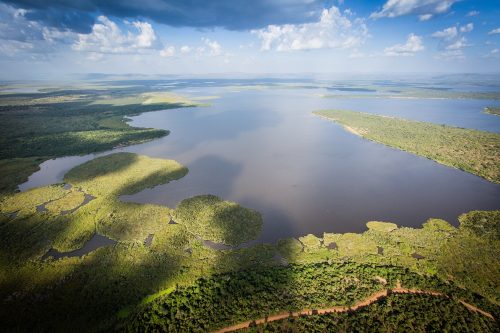
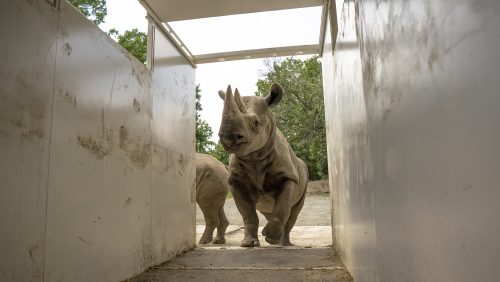
2021
Conservation scientists at the zoo unveiled “the most ambitious plan” in its 90-year history – a new set of targets to secure a future rich in wildlife.
It comes as experts warn that the planet is facing its biggest climate and biodiversity emergencies in a millennia.
The zoo’s new ‘Conservation Masterplan’ – which aims to make a significant contribution to tackling the global extinction crisis – draws on the zoo’s decades of experience of working with wildlife, both at the zoo and with its field partners in the wild, and its expertise in science and conservation.
Experts at the zoo say the plan is committed to the recovery of endangered species, tackling the challenges faced by wildlife both in the UK and globally, and empowering communities to pursue pro-conservation behaviours.
CELEBRATE WITH US
Catch up on our LIVE Virtual Zoo Day! This 90th Anniversary edition is packed FULL of surprises, you won’t want to miss it…
Your zoo ADVENTURE starts right here! Plan your BEST DAY and explore Chester Zoo. There’s plenty to do – so make the most of your day out.
Find out more about our WONDERFUL zoo and all of the incredible animals, plants and FUN things to do here. Download our app or PDF map to help plan you day and find your way around when you get here.
